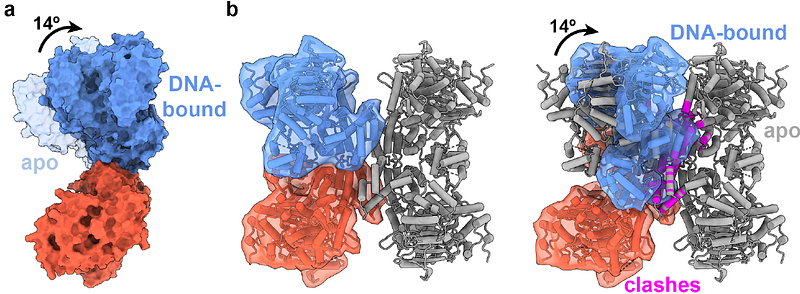Human polymerase theta helicase positions DNA microhomologies for double-strand break repair

Human polymerase theta helicase positions DNA microhomologies for double-strand break repair
Zerio, C. J.; Bai, Y.; Sosa-Alvarado, B. A.; Guzi, T.; Lander, G. C.
AbstractDNA double-strand breaks occur in all human cells on a daily basis and must be repaired with high fidelity to minimize genomic instability. Deficiencies in high-fidelity DNA repair by homologous recombination lead to dependence on DNA polymerase theta, which identifies DNA microhomologies in 3\' single-stranded DNA overhangs and anneals them to initiate error-prone double-strand break repair. The resulting genomic instability is associated with numerous cancers, thereby making this polymerase an attractive therapeutic target. However, the molecular details of this error-prone mechanism are unclear. Here we present cryo-electron microscopy structures of the polymerase theta helicase domain bound to microhomology-containing DNA, revealing DNA- induced rearrangements of the helicase that enable DNA repair. Our structures show that DNA-bound helicase dimers facilitate a microhomology search that positions 3\' single-stranded DNA ends in proximity to align complementary base pairs and anneal DNA microhomology. We define the molecular determinants that enable the polymerase theta helicase domain to identify and pair DNA microhomologies to initiate mutagenic DNA repair, providing mechanistic insights into therapeutic targeting of these interactions.
